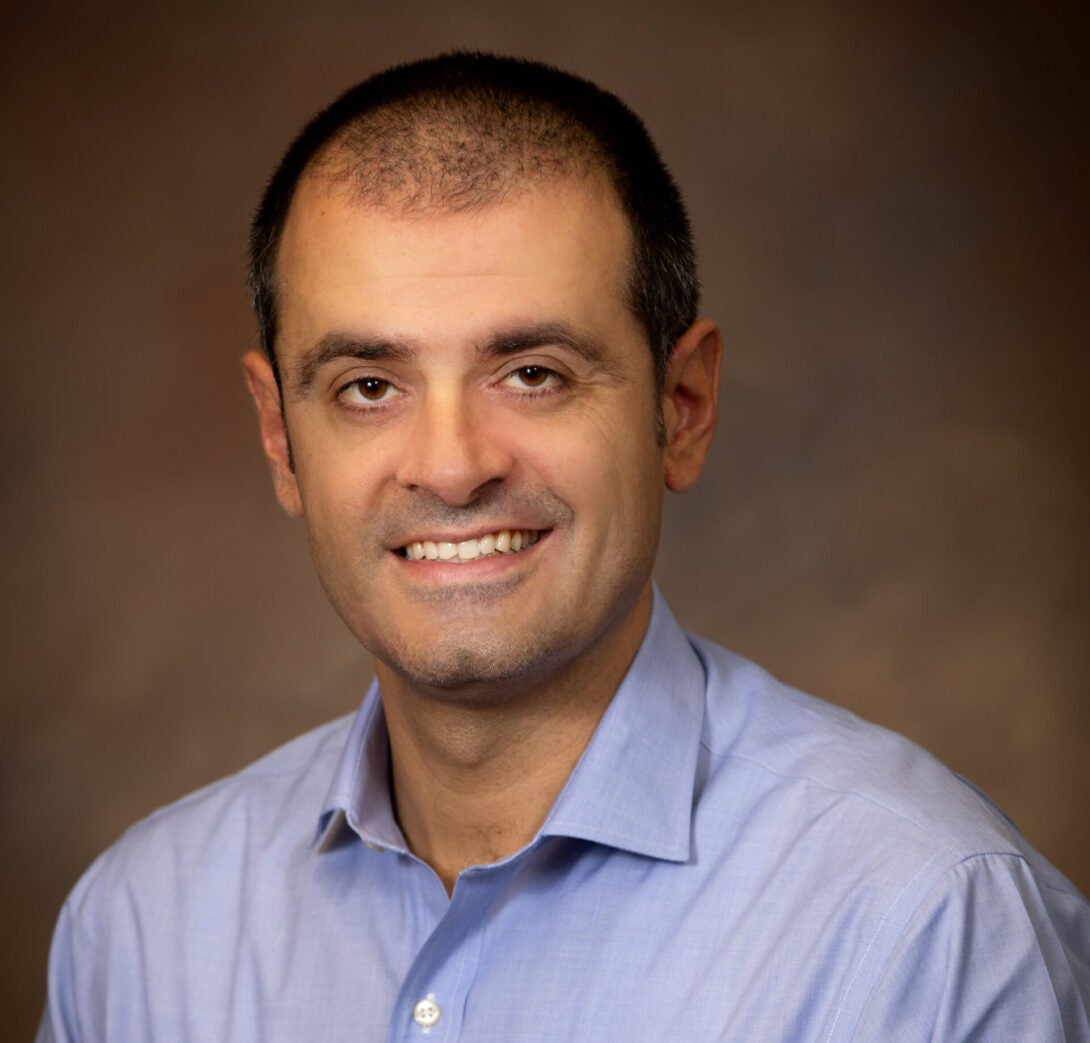Digital health technology expert joins faculty
Digital health technology expert joins faculty

Benjamin Sanchez Terrones joined UIC’s electrical and computer engineering department on January 1 as a visiting associate professor. He is also an affiliate faculty member in the Richard and Loan Hill Department of Biomedical Engineering. His research is at the intersection of engineering and patient-oriented research.
Sanchez Terrones aims to improve health at large, using new digital health technologies to gain a novel mechanistic understanding of disease. These technologies include point-of-care diagnostic devices that can be used at a patient’s bedside, mobile health technologies, including smartphones and other connected medical devices, to conduct interventional studies at home, and wearables like smartwatches and smart rings. Together, these technologies will help to improve our understanding of complex interactions between disease mechanisms and patient populations and optimize patient outcomes through earlier diagnosis, more accurate predictions, and more personalized treatment.
These three core research areas collectively contribute to Sanchez Terrones’ overarching objective: attaining a comprehensive mechanistic understanding to facilitate the creation of devices tailored to address an increasing healthcare crisis in underprivileged and rural communities. These inequalities contribute to gaps in health insurance coverage, uneven access to services, and poorer health outcomes. Sanchez-Terrones aims to provide a well-structured platform to collect valid and reliable health data and an infrastructure for conducting observational and interventional studies while implementing inclusive population research.
At the start of this year, Sanchez Terrones received a National Science Foundation (NSF) CAREER award for his research into the diagnosis and monitoring of neuromuscular disorders. The current clinical standard for patients with these disorders is to place a needle–similar to the kind used in acupuncture–into the muscle to listen to the electrical signals the muscle generates. Sanchez Terrones has developed a painless alternative of capturing these electrical signals from the surface of the skin with the potential to revolutionize the care of hundreds of millions globally suffering from debilitating conditions affecting the health of muscles and nerves.
“The award is about using advanced techniques such as AI to improve our understanding of how these surface measurements from the skin relate to the underlying muscle physiology and biology,” Sanchez Terrones said.
Sanchez Terrones also received a National Institutes of Health (NIH) grant in January focused on evaluating basal and squamous carcinoma, the most common types of skin cancer. By applying and measuring a painless alternating electrical current to the skin, pathological changes to skin architecture and composition can be detected, including changes in inflammation and scarring. This technique has been piloted in over 100 patients, achieving diagnostic performance similar to that of dermatologists and exceeding that of primary care doctors.
Sanchez Terrones said visual assessments are often performed by primary care doctors who evaluate skin lesions and then decide whether to conduct a biopsy. Often, primary care doctors don’t have the same years of training as dermatologists, who are far more accurate in visual assessments. Timely access to a dermatologist can be very limited depending on where you live. Sanchez Terrones’ has developed a handheld point-of-care device that, when in touch with a skin lesion, conducts a rapid readout, aiding doctors in their assessment.
Sanchez Terrones has conducted research into a broad range of healthcare technologies. He is currently the principal investigator in a NSF award where he has developed a new smartwatch technology that uses electricity to measure blood pressure at the wrist and does not require the use of a blood pressure cuff. He also studied the interference effects of smartwatches and other wearable devices on implantable heart devices, such as pacemakers. The electrical interference they produce can cause interference with natural electrical signals generated by the heart and confuse the pacemaker, which could be life-threating. In addition to NSF and NIH funding, his research has been sponsored by industry, including Texas Instruments and Analog Devices. Sanchez Terrones has participated in over $17 million of funded research, with more than $3 million directly supporting his work.
Sanchez Terrones received BS degrees in electronics engineering and telecommunications engineering and his MS and PhD in electronics engineering, all from the Universitat Politècnica de Catalunya in Barcelona, Spain. He is a senior member of IEEE. He has previously worked as an assistant professor at the University of Utah since 2020.
Sanchez Terrones will begin teaching in the Fall 2025 semester. Visit his lab website to learn more about his work.